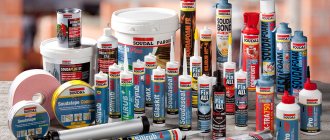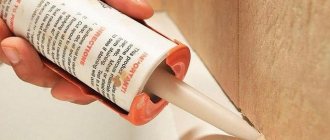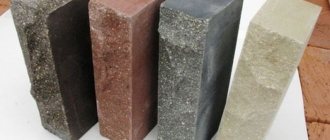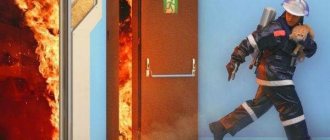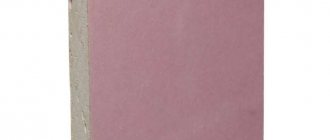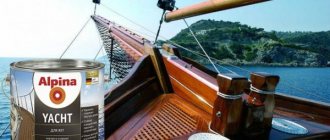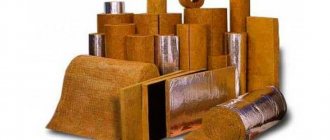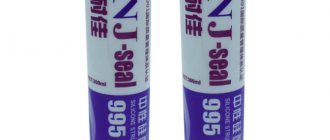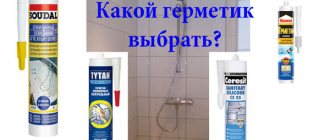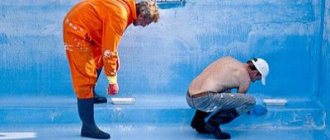During construction work and roof repairs, you cannot do without insulation - these procedures are considered mandatory. There is a wide range of roofing sealants on the market. The choice of sealant is made taking into account the composition, technical characteristics and adhesiveness to the material that was used to install the roof.
Functions of bitumen sealant
This building material can be used not only during construction, but also during renovation work. Roofing sealant is used to eliminate seams and joints between sheets of roofing material. This procedure is especially in demand when sealing roofs with a small angle of inclination. The mixture can also be used to eliminate cracks and cracks in chimneys, ventilation shafts or in the bases of antennas. It is also recommended to treat skates with this composition during roofing work. Please note that this type of roofing sealant can also be used to repair roof leaks. There are other uses for this building material. Often the composition is used as an adhesive substance for water vapor barrier.
The sealant can act as an adhesive Source vse-pro-stroyku.sqicolombia.net
An important area of application for bitumen-based compositions is the insulation of structural surfaces that are constantly in contact with the surface of water or earth. These can be foundations or wooden posts, as well as supports or piles. Over time, if you do not take care of waterproofing, cracks and cracks appear in the concrete, ultimately leading to the complete destruction of the entire building. The sealant is needed in order to completely stop the flow of moisture into microcracks and prevent fungus and rotting. Thanks to this, the foundation or support becomes more durable, and the entire structure more reliable.
See also: Catalog of companies that specialize in auditing construction works
Rubber sealants: special structure
The next type is a bitumen-rubber sealant, developed for a whole range of roofing works. Its main advantage is its thixotropic structure. In simple terms, such a composition will not drain from vertical surfaces even in the heat:
You can work with it at temperatures from -50 to +90 degrees Celsius. Such a wide temperature range means that the sealant can be used even in difficult weather conditions.
Surprisingly, the material does not lose its adhesion even on wet roofing surfaces. This means that right out in the rain, you can repair any roof damage quickly and efficiently.
Also, the great value of synthetic rubber sealant lies in its high heat resistance. At the same time, the sealant adheres perfectly to all smooth and porous roofing materials. Designed for 5 freezing cycles. What does this mean? This means that a crack or hole filled with it can survive complete freezing and thawing 5 times without losing its tightness:
The most popular sealant in this series is produced by Tytan. Its special variety is Tytan Professional for emergency repair of cracked gutters, sealing ventilation passages and chimneys. This sealant is so good that it is even used for boat seams, given that they have constant contact with water:
Here is a clear example of its practical application for various types of roofing:
Types of sealants
There are six types of roofing sealants. Let's take a closer look at each of them:
- Asphalt sealants
: very good for sealing roofs with metal or tar paper coverings. The disadvantages of the material are that it is toxic and not resistant to temperature changes. By the way, frost-resistant roofing sealant is also available for sale. You can paint this mixture to match the color of the roof. Also, bitumen sealant is very moisture resistant and durable. Elasticity makes the sealing process simpler, and the price for such a composition is not affordable. In addition, bitumen sealant provides excellent adhesion to roofing coverings.
Bituminous sealant “works” perfectly with metal and rubyroid Source es.decorexpro.com
- Tape sealants
: are low cost and also easy to use. This type is very resistant to temperature changes and ultraviolet radiation. This method provides greater reliability and resistance to mechanical damage. The tape can also create a thick and wide layer of sealant. It is easy and convenient to make patches from such material, and even a person who has no experience in construction can use it.
Tape sealant is easier for beginners to use Source dingonn.ru
- Rubber or silicone sealant
: suitable for various types of work. Quite resistant to sudden temperature changes. This sealant hardens very quickly. Silicone mixtures are acetic and neutral. The latter have less strength, but also less toxicity.
Rubber sealant withstands sudden temperature changes Source aviarydecor.com
- Acrylic sealants
: they are low cost, but very reliable and durable. As an advantage, we can note the complete absence of odor, due to the fact that the composition does not include a solvent. They provide high adhesion to all types of coatings.
Acrylic sealants do not have any pungent odors and glue almost all surfaces Source prorab.help
See also: Catalog of companies that specialize in completing unfinished houses
- Polyurethane sealants
: such a mixture is created based on resins. It is a viscous and viscous mixture with increased toxicity. Such compositions are more expensive, but at the same time better quality than others. Polyurethane sealant hardens even at low temperatures. Very easy to apply and longer lasting than other compounds. It can be combined with all types of roofing coverings.
The polyurethane composition is used even at low temperatures Source ant-snab.ru
- Two-component sealants
: the basis of this composition is silicone rubber. This also includes adhesive paste and hardener. This sealant can be stored longer than others. But after mixing, you should definitely use the composition for a short period of time. The advantages include convenience and a wide range of temperatures at which the mixture hardens and also retains its insulating qualities. The composition can be used with almost all types of coatings, while it provides excellent adhesion to basic building materials.
Two-component sealants in their “raw” form are stored for a long time, but in finished form they require immediate use Source vse-pro-stroyku.sqicolombia.net
Rubber sealants: high elasticity
Rubber sealant is intended primarily for repairing expansion joints and gaps between such dissimilar materials as stone-wood, metal-glass, plastic-metal and concrete-metal.
This sealant is indispensable for repairing colored seam roofs, ridges, drainage elements, junctions and valleys. In addition, it can be painted in any color and applied without any preliminary primer.
Among rubber sealants, the most popular sealant is X-Treme. It is made on the basis of rubber with fiber fibers that strengthen it. A rather interesting composition of the sealant creates a plastic seam that quickly hardens due to the evaporation of the solvent.
This sealant is ideal for surfaces with different thermal expansion to fill expansion joints between such dissimilar materials as glass-stone, stone-wood, concrete-metal and others.
Bitumen sealants and their main properties
Bitumen is a natural material that people have learned to enrich with polymer compounds, thereby increasing its viscosity. This also made it possible to reduce the material’s exposure to low and high temperatures. Bituminous roofing sealant produced by a reputable manufacturer must have a number of positive qualities:
- It goes
with various types of roofing coverings. - It has very good elasticity
and increased penetrating properties. - Well protects metal coatings from corrosion
. - Does not crack
after drying. - Bitumen sealant is not afraid of
ultraviolet radiation. - It is not
a favorable environment for the reproduction of microorganisms and plants. - From an environmental point of view, this composition is absolutely safe
.
By using sealant in rooms with high humidity, you can be sure that it will not become a conductor for mold Source sk.decoratex.biz
As you can see, the mixture has a number of advantages that make it very popular. Bitumen sealant is used at all stages of building construction and is well suited not only for the roof sealing procedure, but also for other construction work.
Important! Bitumen-based compounds should not be used to seal cracks near chimneys, because this material has limitations on the temperatures at which it retains its properties.
Popular brands
There are many products on the market that are suitable for sealing roofs. The most famous:
- “Titan” - easily withstands frost, can be used with any materials, perfectly seals flat and seam roofs;
- “Sazilast” - it can be applied even at sub-zero temperatures, after hardening it exhibits a high degree of adhesion;
- SOUDAL Aquafix - suitable for wet and underwater surfaces, allows repairs in rainy weather, ideal for metal tiles and gutters;
- Ceresit is resistant even at abnormally low temperatures, after curing it resembles plastic, therefore it is not used on deformable substrates;
- RoofPlast is based on bitumen and is considered one of the highest quality sealants.
Why do you need to seal your roof?
Sealing the roof will protect the rafter system, as well as the roofing pie, from moisture penetrating inside and from getting the insulation layer wet. It is also worth noting that this process protects the most unprotected places from the effects of aggressive reagents falling along with precipitation. If water gets inside the roof, the rafters will quickly rot and become covered with fungus, even if they are well treated with protective compounds. The thermal conductivity of the roof will also increase, so the house will be too cold in winter and too hot in summer.
No matter how carefully the cracks on the roof are sealed with other materials, the sealant will complete the job Source repairblog.ru
Thus, sealing is a very important process that increases the reliability and durability of the entire structure.
Metal roofing
Metal profiles or corrugated sheets are profiled metal sheets.
They have high strength due to stiffening ribs, long service life (minimum 15 years), resistance to solar radiation, temperature changes, beautiful appearance and the ability to choose the color of the material.
The advantage of corrugated sheeting is the relatively simple installation of roofing.
All these characteristics make corrugated sheeting a popular roofing material in private construction. It is usually used when arranging pitched roofs with a slope length of less than 12 m.
The process of installing a corrugated roofing consists of laying metal sheets on the sheathing.
Sheets of corrugated sheets are laid in horizontal rows, starting from the lowest row and fastened with self-tapping screws. Overlap must be provided at the junction of sheets and at the junction of rows made of corrugated sheets.
One of the main components of the roof is the ridge. At this point, the upper rows of metal profile sheets are joined. The joint is covered with a ridge strip.
How to apply bitumen sealant during construction work
Factories produce roof sealant in various packaging. Metal cans and tubes are the most popular due to their convenience and practicality. The latter are excellent for working with narrow seams and cracks. When applying sealant, you should use a special gun. It will greatly facilitate the sealing process and allow it to be completed without wasting extra mixture. It also allows access to difficult and hidden seams or cracks. The product, sold in cans or plastic buckets, should be applied in layers using a spatula. Excess sealant must be removed. However, it is worth paying attention to the fact that it is advisable to buy such packaging only if there is a large amount of work to be done.
For a certain number of jobs, you can select a specific container with sealant Source asuncion.alpens.ru
Subtleties of working with sealant
To carry out roofing work, you need to know the features of using a particular sealant. For example, two-component formulations must be mixed correctly: according to the instructions, in compliance with the proportions and timing. It is usually recommended to stir with a drill at medium speed for 10–15 minutes. It is advisable to carry out the procedure in a warm room, since in the cold the mass thickens greatly, and it is forbidden to dilute it with a solvent.
Sealants should not be applied to wet concrete or icy surfaces. The result will not be of high quality if you treat the lid with sealant at temperatures below –25 and above +50 degrees. The thickness of the layer of the composition should not be more than 3–4 mm, while sagging and tears are excluded. The easiest way to apply sealant is with a special gun, since manual extrusion often results in crooked seams. To ensure that the composition lies evenly, the areas around the seams can be covered with masking tape, and only then begin applying the composition. After the product has completely dried, the roof will be ready for use: it will be reliably protected from leaks for a long time!
Prices for various bitumen sealants
Let's start with acrylic roof sealants. The prices for such compositions on the Internet vary. Popular trading platforms offer mixtures from various manufacturers and with various additional components in the composition. We will consider tubes with a capacity of 310 milliliters. Such a container costs from 94 to 256 rubles. The best option can be purchased for 170 – 200 rubles.
Silicone and rubber compounds have a slightly higher price. So the cheapest sealant in the same 310 milliliter tube will cost about 130 rubles. The most expensive one costs 450 -460 rubles. The optimal composition in terms of price and quality will cost you 220 rubles.
Bituminous sealants have average price indicators. The cost of a tube on the Internet is set in the range from 170 to 260 rubles. The choice of such a composition is the most optimal, because the low cost is combined with a number of advantages of this material.
The price of the sealant depends on the volume sold and on the composition of the sealant Source stroy-vdom.ru
Advantages and disadvantages of the material
Bitumen compositions have the following positive aspects:
- possibility of use on surfaces made of metal, concrete, wood, slate, roofing felt, brick or stone, as well as bitumen shingles and more;
- resistance to moisture;
- contact surfaces do not need to be dried;
- can be used even after rain;
- service life is up to 20 years;
- does not cause corrosion upon contact with metals;
- maximum setting time;
- the composition does not crack or dry out and is resistant to sagging;
- the deformation is minor;
- the sealant is not susceptible to mold fungi;
- low cost.
But this method also has its disadvantages:
- it can only be used for external use due to the toxicity of the product;
- the sealant is flammable;
- if the temperature is too high, it softens;
- If the surface is porous, a primer is needed.
Features and rules for installing ebb tides
How to install flashings for a foundation plinth with your own hands? Let's consider the algorithm of actions in individual stages.
Tools and materials
In order for the installation work to be successful, you will have to prepare everything you need in advance:
- additional elements;
- polyurethane foam;
- sealant or putty material with a moisture-repellent effect;
- grinder, tile cutter, metal cutting scissors, small hacksaw;
- hammer, rubber mallet, pliers;
- building level;
- impact drill or hammer drill;
- dowels, screws;
- brackets for fastening;
- screwdriver
Preparatory work
All imperfections on the base surface are eliminated, cracks and joints are sealed. For this, water-repellent mastic or construction sealant is used. Walls made of wood are treated with an antiseptic.
Painting of products
Work on painting drip linings can be carried out at the installation site or in the factory. If wooden or concrete panels are used, it is most convenient to paint them after installation is complete, when the likelihood of damaging the new decor is minimal. It is not entirely correct to use pre-painted wood; parts of the ebb have to be adjusted in width and length or various types of recesses, grooves, cutouts, etc. must be made in them. Because of this, chips appear and the paint layer is necessarily damaged.
Aluminum products are painted with polymer compounds and varnishes. To ensure that the adhesion of the paint to the surface is as good as possible, the metal is degreased and then chromatized. Next, the technology involves firing and applying a varnish layer, which is also fired. Paints based on polyester, pural and plastisol are widely used to decorate and protect zinc-coated steel flashings.
- Polymer painting of metal castings is carried out mainly by the powder method. This way, the service life of the products is extended at least twice.
- Any galvanized surface is first prepared using adjacent components to improve adhesion and increase resistance to destructive influences.
- As a result of passivation, the metal receives additional anti-corrosion protection.
- Powder coating is performed in workshops with professional equipment.
- To create an external protective barrier, steel castings with zinc undergo polymerization.
- The durability of the decorative layer depends on the quality of paint application, the thickness of the layer and its elasticity.
Among other things, polymer paints are safe for health and, in comparison with other types of coatings, are quite affordable. To achieve exclusive aesthetic properties, mixing paints of several colors is allowed.
If ordinary sheet steel with a zinc layer is used to make castings, then before painting they require treatment using an ammonia solution, the concentration of which depends on the degree of surface contamination. When painting begins after some time, perhaps after several years of use, then to increase the guarantee of a positive result, you can use a vinegar solution and thoroughly rinse the cast with it.
How is a seam galvanized roof sealed?
To seal seams and joints of seam fasteners, it is better to use bitumen or polyurethane sealant for seam roofing. Silicone composition is not suitable in this case, as it provokes the appearance of rust on the folds. The procedure for sealing a seam roof is carried out in several stages. First of all, the surface needs to be cleaned, removing not only dirt, but also rust. Next, degreasing is carried out using a solvent. When the folds have dried well, you can apply paste to them, observing the recommended operating temperature.
This type of sealant is not always convenient: this applies to situations where the paste must lie flush with the surface without forming a bulge. Therefore, sealing self-adhesive tapes are often used on corrugated roofs. One of its sides will require cleaning of the anti-adhesive layer. Next, the sticky part is pressed onto the cleaned and grease-free joint. To improve the joining, the edge of the tape is usually rolled with a roller to avoid tearing during operation. Such complex areas as junctions with structures facing the roof are treated with special corrugated tapes.
Positive and negative traits
Analysis of the advantages of individual types of ebb tides is carried out based on the material of manufacture and conditions of use.
Galvanized products
- They fully justify their price, especially with regard to service life. The standard galvanized casting includes a mounting bend and a drainage drip. Polyester (matte, glossy), plastisol and pural are used as protective and decorative coatings. Since their properties are different, this affects the durability of the products. The leader in strength is plastisol, which lasts an average of 50 years, and pural is considered the most resistant to corrosion.
- We can confidently say that any galvanized casting will last at least 15-20 years, and then everything depends on the complexity of the weather conditions, the integrity of the protective coating and the thickness of the zinc layer on the steel sheet.
- It must be remembered that precipitation gradually washes out zinc, so when choosing a material you need to clarify what the coating density is in a particular case. With a zinc density of 180 g/m2, the casting will last 5-7 years less than when a sample with a galvanizing density of 275 g/m2 is available. The length of galvanized elements varies from a few tens of centimeters to 3 m.
Which manufacturers to focus on
The cost of roofing sealants is determined taking into account what properties the material has, who produces it, and in what region it is sold. In addition, wholesale purchases will be cheaper than individual purchases.
The most popular manufacturers of materials for roof sealing are:
- Soudal.
- Makroflex.
- Tytan.
- LIQUID NAILS.
Before purchasing roofing sealant, carefully study its packaging. It is important to understand what setting speed this material has and how it reacts to high humidity. A separate list usually indicates the compatibility of the sealant with certain roofing materials.
It is also very important whether it can be painted after drying, and what is the level of resistance to climatic influences. The correct selection of material and its proper application will guarantee the creation of high-quality protection for the roof. Most of these jobs will not require any special experience. However, if in doubt, it is better to hire experienced roofers: they will tell you which roofing sealant to use for a given situation.
Ebb tides for the base
Base ebbs include linear planks or blocks that form a continuous structure in the form of a narrow canopy along the entire perimeter of the building and cover the protruding part of the foundation. If the wall and plinth are made of a homogeneous material, located in the same plane, and there is no visible protrusion between them, installing a flashing may not be necessary, however, when using different cladding materials or having leaky joints, installing a flashing is necessary. The ebb, located at a slight angle, is attached to the wall or base on one side, and the other is inclined to the bottom, which ensures unhindered drainage of precipitation and its removal from the base.
Installation of ebb tides on the base of a log house
Object: a log house made of unrounded logs, which created certain difficulties during the installation work, which were successfully overcome (details in the photo report).
Task: production and installation of ebb and flow sills on the base of the house. Optional: installation of ebb tides on a brazier located in the yard.
Result: all ebb segments are adjusted in width and connected with a single standing seam lock. The basement of the house received reliable protection from the effects of precipitation.
Address: Moscow, Rogovskoye settlement, Krucha village.
We are ready to do this work for you.
The flashings for the plinth perform a protective function, preventing rainwater from entering the masonry. The appearance of the building takes on a complete look. Reliable connection of the component elements of the ebb using a rebate lock provides the necessary sealing and strength of the structure.
We will manufacture and install ebb sills on the plinth and foundation. We will consult and take all necessary measurements. The quality of work is guaranteed by the use of high-quality materials and extensive experience. Contact numbers are listed in the header of the site. You can use the Call Back function. We will fulfill your order promptly with a guarantee, please contact us!
Adhesive sealant for seams white
CEMMIX Adhesive-sealant for seams is a one-component polyurethane sealant for sealing various seams, junctions of steps and walls, entry of pipes and ventilation systems and rigid-elastic gluing of various materials.
More details
Why Cemmix Facade Sealant (available in eight shades) and Cemmix Seam Adhesive Sealant (available in four shades) are the optimal choice of frost-resistant sealant for exterior use:
- easy application using a construction gun;
- high thixotropy, no bubbles, no spreading;
- fast initial curing, high polymerization rate;
- high adhesion even on wet surfaces (without primer);
- high elasticity, mechanical strength, elasticity under any operating conditions;
- chemical resistance;
- stability in conditions of high and low temperatures, temperature fluctuations, vibration;
- waterproof;
- antiseptic properties;
- possibility of coloring;
- service life 10–25 years;
- versatility (can be used for external and internal work).
The consumption of Cemmix facade sealant and Cemmix adhesive-sealant for seams with a seam width of 20 mm is 240 ml per linear meter.
Sealing tapes
Sealants in the form of tapes based on butyl rubber are easy to use and are successfully used even on such complex units as the junction of the roof with the chimney and others.
They have high adhesion, are durable, resistant to solar radiation, high and low temperatures. Retains constant elasticity and does not crack.
Sealing tapes are intended for outdoor use.
Adhesive sealant for seams white
CEMMIX Adhesive-sealant for seams is a one-component polyurethane sealant for sealing various seams, junctions of steps and walls, entry of pipes and ventilation systems and rigid-elastic gluing of various materials.
More details
Frost-resistant is a sealant that, during operation, can withstand sub-zero temperatures and a large number of freeze-thaw cycles while maintaining its characteristics.
Also important is the ability to store the sealant in a closed package in the cold and the ability to work with it in cold weather.
Criterias of choice
The casting for the foundation plinth is the final stage of façade finishing. With its help, the boundary separating the ground part of the foundation from the load-bearing walls is conditionally determined. It follows that it is necessary to choose ebb tides according to the following conditions:
- protective function;
- aesthetic appearance.
The ebb is chosen to match the tone of the façade finishing, and the material used to finish the walls and base must be taken into account.
For structures built from timber, it is recommended to use ebbs from any metal; for buildings made of brick or block, it is allowed to install ebbs from any materials.
You should pay attention to the thickness, weight, uniformity of structure and shades, the quality of the coating (if any), and the specifics of the installation work. Low-cost products have a short service life, so saving in this case is not recommended.
Correctly selected ebbs must completely coincide with the base forms, corner areas, niches, rounded areas, and bay windows. When laying strips, a mandatory overlap is provided, which should be taken into account when performing calculations on the requirements for materials and all necessary components.
Purpose and need for installation
Water that gets onto the base surface begins to gradually destroy it. Deformation changes are most noticeable during temperature changes - in cold weather, water freezes, in the summer, cracks form on the structure, the plaster peels off and falls off, sometimes even entire bricks fall out. The foundation is destroyed and becomes unsafe. To prevent such negative manifestations, ebb tides are installed on the base of the foundation.
The ebb on the base of the house protects the foundation from the destructive effects of water
Liquid Nails GT 125 mastic for restoring deformed gutters
Butyl-based mastic is an ideal solution for sealing drain joints. The paste has excellent adhesion to aluminum, PVC, galvanized, and tolerates painting with latex and oil paint. White sealant is characterized by high elasticity, resistance to moisture and negative temperatures. In addition to sealing seams, the paste is ideal for restoring deformed gutters. Sealant can be used to seal small cracks and even small holes.
Attention! The sealant can be used at sub-zero temperatures, but in order for the paste to be better squeezed out of the tube, it must first be kept at room temperature.
The instructions for using the sealant are simple:
- It is optimal to work with mastic at temperatures above +4°C. Old accumulations of paint, putty and other dirt are removed from the surface of the workpiece. If the metal drain has corroded, the rust is removed with a metal brush. The completely cleaned surface is left to dry.
- The tube kept at room temperature is inserted into the gun. The plastic tip has notches, each of which is designed for a certain thickness of mastic extrusion. Using a sharp knife, cut off the tip tip according to the required notch, and also remove the membrane at the end of the tube thread that prevents the sealant from being squeezed out.
- Having screwed the tip onto the thread of the cylinder, they begin to squeeze the sealant onto the drain joint with the trigger of the gun. When sealing a hole in the gutter with a diameter of more than 12 mm, apply a splint made of a piece of plastic or metal.
The paste will begin to harden after 5 minutes. During this time, it is necessary to remove the protruding excess at the joints of the gutters, and where patches were installed, the mastic is smoothed with a scraper. The joint will gain full strength in 5 days, but the frozen layer can be painted within a day. The sealant can also be used in a damp environment, but the polymerization time increases by 10%. The approximate consumption of sealant for a layer thickness of 6.5 mm is 10 lm. If it is necessary to remove the frozen layer, use a cleaner from the same company or any mineral solvent.
How to use silicone on roofing
Silicone sealants are currently the most popular. It is very simple to operate, so the help of professionals is not needed in this case. To achieve a good quality seal, you will need to follow some guidelines. Thus, the depth and width of the seam being processed should have an optimal ratio of 2/3. In practice, the depth exceeds the recommended value: this problem is solved by pre-laying a special polyethylene cord. For its manufacture, ordinary polyethylene bags will do.
To correct significant widths, you can also use polyethylene cut into strips. Before laying silicone for the roof, the joint surface must be thoroughly cleaned and degreased. Certain situations will require preliminary priming. To obtain a smooth surface, use a spatula of suitable width, specially designed for such operations. You can also use a leveling spray. The drying speed of silicone sealant is affected by the depth of installation, but the initial setting of the paste occurs quite quickly.
Why do we need ebb tides on the foundation?
Installing the ebb on the foundation base allows you to achieve the following goals:
- giving the building a finished aesthetic appearance;
- preventing moisture from entering the base. Indeed, as a result of humidity, mold may appear there and rotting may begin;
- ebbs on the base of the house will protect the insulating layer from destruction;
- protection of decorative coatings from the negative effects of natural factors.
You can make a drip lining for your home from a variety of materials. Regardless of their execution, their task will remain the same: to protect the foundation of the building. First of all, from weather influences.
However, over time, the base of the building begins to “fail.” This is expressed in the deterioration of its appearance and the appearance of mold. The decorative coating may fall off and there may be a leak. Making repairs, as discussed in the next article, means preventing the possibility of further destruction. But the process of operating the structure depends on the condition of the foundation.
